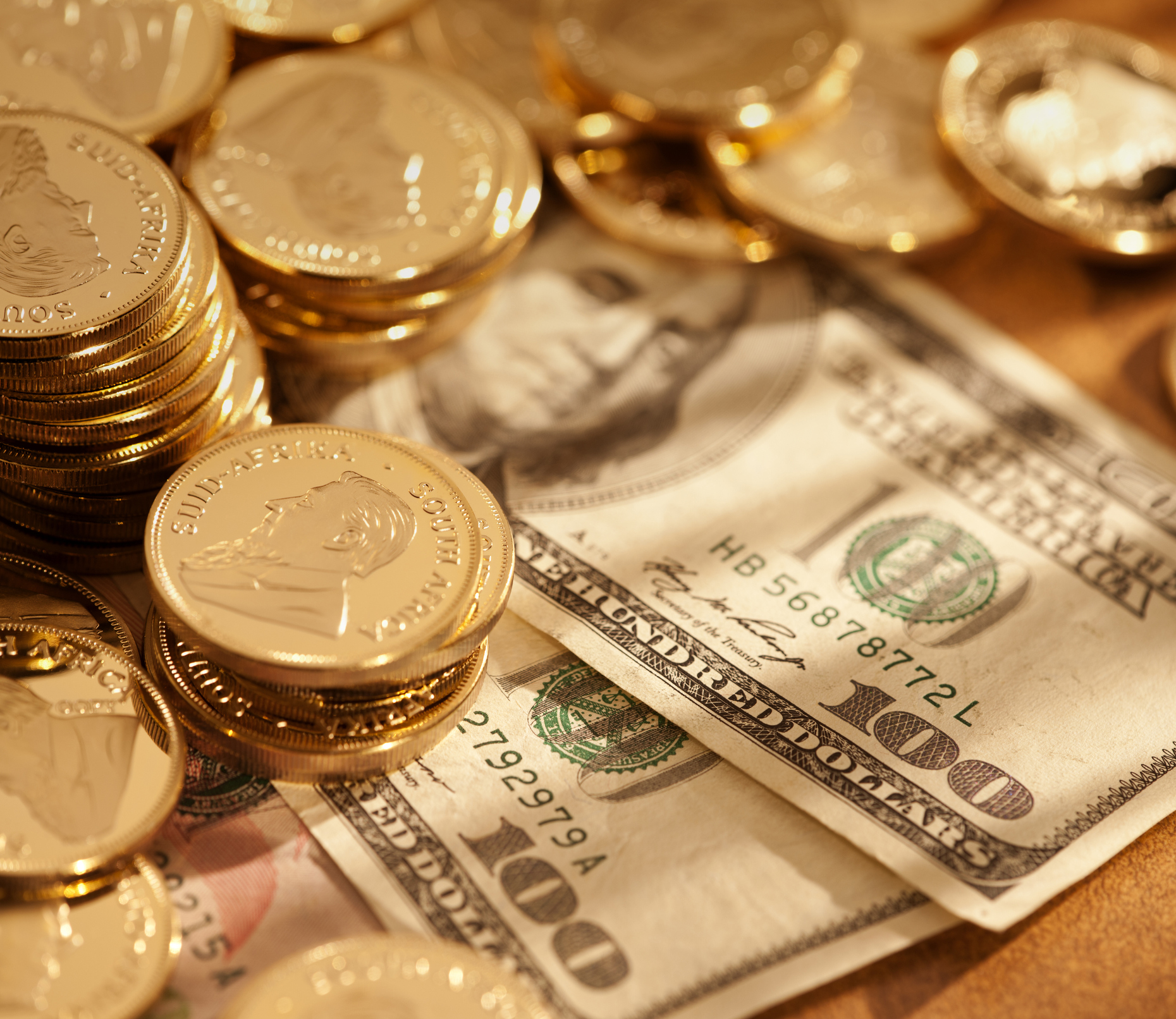American voters will decide if the PRC wins.
Fatal Dependency

America's increasing reliance on foreigners to lend us money could crater the dollar.
The United States has borrowed $18 trillion from foreigners since the Great Financial Crisis of 2008, a staggering sum that is nearly equal to America’s annual Gross Domestic Product. The notion that the dollar’s dominance in world finance might come to an end was a fringe view only five years ago, when America’s net foreign investment position was a mere negative $8 trillion. Notably, the net international investment position fell by $6 trillion between 2019 and 2022, roughly the amount of federal stimulus spent in response to the COVID-19 pandemic.
In a December 2021 report for the Claremont Institute’s Center for the American Way of Life, I warned about the likely consequences of mounting U.S. deficits:
The United States stock market now trades at nearly thirty times earnings, a multiple not seen since 2000, before a long and painful correction. The lofty valuation of the U.S. equity market is driven by the longest period of negative real interest rates in U.S. history. If the dollar’s reserve status is compromised, the United States will no longer be able to borrow at negative real rates, and rising bond yields will put pressure on equity markets, depressing the value of the U.S. stock market and reducing the value of pension and retirement funds.
Dollar Dominance
One used to read about the demise of dollar dominance in the newsletters of coin dealers and monetary cranks; now we read such forecasts in research reports by Credit Suisse. The research department of Goldman Sachs, possibly the most conventional of all commentators, warns that the dollar will go the way of the British pound, as “unsustainable current account deficits” lead to “high U.S. inflation” and “substitution into other reserve currencies.” Economists Cristina Tessari and Zach Pandl wrote on March 30:
The Dollar today faces many of the same challenges as the British Pound in the early 20th century: a small share of global trade volumes relative to the currency’s dominance in international payments, a deteriorating net foreign asset position, and potentially adverse geopolitical developments. At the same time, there are important differences—especially less-severe domestic economic conditions in the U.S. today than in the UK in the aftermath of WWII. If foreign investors were to become more reluctant to hold U.S. liabilities—e.g. because of structural changes in world commodity trade—the result could be Dollar depreciation and/or higher real interest rates in order to prevent or slow Dollar depreciation. Alternatively, U.S. policymakers could take other steps to stabilize net foreign liabilities, including tightening fiscal policy. The bottom line is that whether the dollar retains its dominant reserve currency status depends, first and foremost, on U.S.’s own policies. Policies that allow unsustainable current account deficits to persist, lead to the accumulation of large external debts, and/or result in high U.S. inflation, could contribute to substitution into other reserve currencies.
Credit Suisse analyst Zoltan Pozsar wrote on March 7:
We are witnessing the birth of Bretton Woods III – a new world (monetary) order centered around commodity-based currencies in the East that will likely weaken the Eurodollar system and also contribute to inflationary forces in the West. A crisis is unfolding. A crisis of commodities. Commodities are collateral, and collateral is money, and this crisis is about the rising allure of outside money over inside money. Bretton Woods II was built on inside money, and its foundations crumbled a week ago when the G7 seized Russia’s FX reserves…
Washington’s seizure of Russian foreign exchange reserves seems risky given America’s enormous and accelerating dependency on foreign borrowing. Paradoxically, America’s strength lies in its weakness: A sudden end to the dollar’s leading role in world finance would have devastating consequences for the U.S. economy, as well as the economies of its trading partners.
In addition to the $18 trillion of net foreign investment in the U.S., foreigners keep about $16 trillion in U.S.D in overseas bank deposits to finance international transactions. That’s $34 trillion of foreign financing against a U.S. GDP of not quite $23 trillion. Foreigners also have enormous exposure to the U.S. stock and real estate markets.
No one—least of all China with its $3 trillion in reserves—wants a run against the dollar and dollar assets. But the world’s central banks are reducing dollar exposure, cautiously but steadily. The trickle of diversification out of dollars could turn into a flood. What the International Monetary Fund March 22 called “the stealth erosion of dollar dominance” presages a not-so-stealthy exit from the dollar. Unlike Nebuchadnezzars’ handwriting on the wall, the king’s soothsayers can read the message as plain as day.
New Solutions
Notably, Russia’s central bank cut the share of U.S. dollar in its reserves from 21 percent a year ago to just 11 percent in January, while increasing its holdings in Chinese renminbi to 17 percent from 13 percent a year ago. Russia’s central bank has also bought more gold than any other institution in recent years.
With just 8 percent of world export volume vs. China’s 15 percent, the reserve role of the U.S. dollar no longer reflects American economic strength. It derives, perversely, from the rest of the world’s desire to save. The people of the world’s high-income countries are aging rapidly. In 2001, 28 percent of their population was aged 50 years or older; by 2040 the proportion will reach 45 percent. Aging populations save for retirement. The Germans and Japanese save nearly 30 percent of GDP, and the Chinese save 44 percent; America saves just 18 percent of GDP.
For the past fifteen years, American consumers have bought roughly a trillion dollars more of goods each year than America exports. The import-led consumption boom, and the availability of cheap electronics from China and other Asian exporters, fed a digital entertainment boom that inflated the stock prices of Apple, Microsoft, Google, Meta and other U.S. software companies. Foreigners then invested their earnings from exports in U.S. tech stocks, as well as government bonds, real estate, and other assets. The tech boom harmed the U.S. economy far more than it helped it, turning American teenagers into risk-averse recluses addicted to smartphones and social media, while generating stock market valuations never before seen outside of classic economic histories of bubbles.
The increase in American imports from China is shocking. Seasonally adjusted, Chinese exports to the U.S., as reported by China’s Statistics Bureau, have risen from an annual rate of about $409 billion in August 2019, when the U.S. imposed tariffs on a wide range of Chinese goods, to $674 billion in March 2022. The Chinese data are more reliable than U.S. import data, according to a study by the Federal Reserve Board of Governors, because the U.S. data fail to distinguish between direct Chinese exports to the U.S. and exports “washed” through third countries to evade tariffs
Big, Big Bubble
The result is the biggest bubble in world financial history. When the COVID-19 pandemic threatened to collapse the bubble, the U.S. government added $6 trillion in stimulus to the economy. That shot of adrenaline reinflated the tech bubble, which explains why the U.S. net foreign investment position fell by another $6 trillion between 2019 and 2022, to today’s negative $18 trillion level.
Overall, net imports of manufactures rose from about $60 billion a month prior to the COVID pandemic, to $100 billion a month as of February 2022.
The bubble is so enormous that the entire world has a stake in it, and none of the world’s major economies can extract themselves from it without significant damage. China finds itself suffering from punitive American tariffs and sanctions on technology imports, while shipping more than $600 billion of manufactured goods to the U.S. each year—nearly a third more than it did before the Trump Administration imposed tariffs in 2019. China’s leaders want to encourage more domestic consumption and less net savings, but can’t persuade the Chinese to consume. China therefore continues to export to the U.S. and bank the proceeds.
The world can easily get along without the dollar to finance trade. India and Russia can settle trade in their own currencies, with their respective central banks providing rupees and rubles as required through swap lines. Russia’s surplus with India will be invested in the Indian corporate bond market, according to news reports. India reportedly is gearing up to increase exports to Russia by $2 billion a year, a 50 percent increase from current levels.
China meanwhile is paying for oil imports both from Russia and Saudi Arabia in its own currency. The RMB has appreciated against the U.S. dollar by more than 12 percent since September 2019, and continues to offer higher real yields than the dollar, as well as a range of investment opportunities, despite China’s exchange controls.
Nothing prevents the 76 percent of the world’s population whose governments refused to join the sanctions regime against Russia from financing trade in local currency. Asian countries now have $380 billion of swap lines in place, more than enough to accommodate the whole of intra-Asian trade.
All That Glitters
To the extent that long-term imbalances emerge in trade, central banks can settle up by transferring gold. Several misleading media reports have claimed that the U.S. can prevent Russia from using its gold reserves. That is inaccurate; the U.S. can keep Russia out of public gold markets, but it can’t step Russia from trading gold with the central banks of India or China.
By no coincidence, the same central banks who are bypassing the dollar financing system have bought the most gold over the past twenty years, according to the World Gold Council’s data. China and Russia were the biggest buyers of gold, followed by Turkey, India and Kazakhstan.
Gold’s value relative to competing U.S. dollar assets stands at an all-time record high. In normal times investors get the same sort of protection from inflation-indexed U.S. government bonds, or Treasury Inflation-Protected Securities (TIPS) as they do from gold. In case of a sudden fall in the value of the dollar and a corresponding rise in the U.S. price level, TIPS will pay a bonus to investors in proportion to the rise in the U.S. Consumer Price Index. During the past 15 years, the co-movement of gold and TIPS yields has been remarkably steady 85 percent.
But TIPS and gold diverged on three occasions. The first was the Lehman bankruptcy of 2008, which touched off the global financial crisis. The second was the near bankruptcy of Italy in 2011. And the third, and most extreme, occurred in the aftermath of the Ukraine war.
At about $1970 an ounce, gold is now $437 “rich” to TIPS. The sharp rise in U.S. yields during the past two months would have toppled the gold price under normal circumstances. But the seizure of central bank assets by executive fiat is far from normal. Gold is trading right around its all-time high point despite the rise in interest rates.
Gold’s premium against TIPS reflects a wide variety of risks. One risk is that the U.S. government’s measure of inflation may not keep up with actual inflation. For example, the rent component of the Consumer Price Index rose by 4.5 percent during the year through March 31, 2022, while the private-sector Zillow Index of rents rose by 17 percent. Another risk is that the dollar may depreciate against other currencies faster than the payout in TIPS. And for some investors, the threat of confiscation, as in the case of Russian Central Bank reserves and the personal assets of wealthy Russians, is a discouragement.
Gold also represents an option on “Bretton Woods III,” a local-currency regime of trade financing in which some imbalances may be settled in gold. The value of the nearly 32,000 tons of gold now held by central banks is a bit over U.S.$2 trillion at the April 13, 2022 price of $1,980 an ounce. That represents about one-sixth of world central bank reserves of $12 trillion. If gold were to substitute for the dollar as a reserve instrument, the proportion of gold in central bank reserves would have to increase, which in turn implies a substantial increase in the gold price. Persistently high inflation in the U.S. and the Euozone, moreover, would lead to an increase in the gold price as well.
If the United States finds itself unable to run large current account deficits financed by sales of assets, the outcome will be a sharp decrease in consumption. The indicated solution is aggressive preemptive action to restore U.S. manufacturing capacity and reduce America’s crippling dependency on imports. Unfortunately, current economic policies have led the U.S. into greater dependency. Without a policy change, this will not end well for the United States.
The American Mind presents a range of perspectives. Views are writers’ own and do not necessarily represent those of The Claremont Institute.
The American Mind is a publication of the Claremont Institute, a non-profit 501(c)(3) organization, dedicated to restoring the principles of the American Founding to their rightful, preeminent authority in our national life. Interested in supporting our work? Gifts to the Claremont Institute are tax-deductible.
America’s inflation has more staying power and deeper roots than Washington admits.
The yuan is a long way from becoming the world’s reserve currency.



